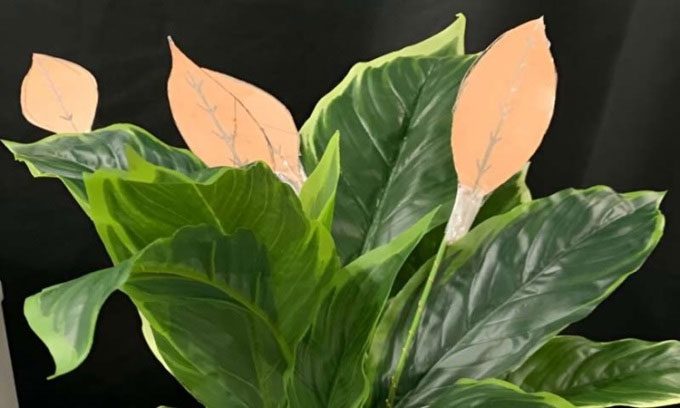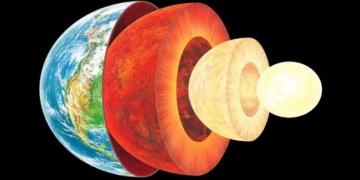Researchers Develop Mini “Power Plants”: Leaf-Shaped Devices Generate Electricity from Wind and Rain.
In a study published in the journal ACS Sustainable Chemistry & Engineering, a team of experts from China, the UK, and the USA examined energy-harvesting devices by integrating them with artificial plants, as reported by Phys.org on January 17.

Artificial plant generating electricity integrated with beige leaf-shaped generator. (Photo: ACS Sustainable Chemistry & Engineering).
Electric energy can be produced naturally in several ways. For instance, solar panels convert sunlight into energy, while wind turbines harness the momentum of moving air. However, these methods typically rely on a specific source, making them effective only when that source is available. For example, solar panels cannot operate after sunset, and calm days provide little energy from wind.
Recently, energy-harvesting devices that collect energy from multiple sources have emerged as a solution to exploit energy from various renewable sources within a single design, maximizing potential output. Thus, researcher Ravinder Dahiya from Northeastern University in the USA and his colleagues aimed to create such a multi-source device that generates electricity from both wind and rain.
The research team developed two types of energy-harvesting devices: triboelectric nanogenerators (TENG) to capture momentum from the wind and drop energy generators (DEG) to harness energy from falling raindrops. TENG consists of a nylon nanofiber layer sandwiched between layers of polytetrafluoroethylene, commonly known as Teflon, and copper electrodes.
Static electricity is generated and converted into electrical energy when the layers are pressed together. Teflon is also used to construct the DEG, which can be waterproof and is coated with conductive fabric that serves as an electrode. When a raindrop strikes an electrode, it creates a voltage difference, generating a current. Under optimal conditions, TENG produces 252 V of electricity, while DEG provides 113 V, but only for a short duration.
The research team placed the DEG above the TENG and combined leaf-shaped versions on the artificial plant. When the leaf generators were exposed to conditions simulating natural wind and rain, they could illuminate 10 LED bulbs for a limited time. This “electric plant” device could evolve into a larger system or network to produce clean energy from natural sources.


















































